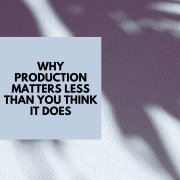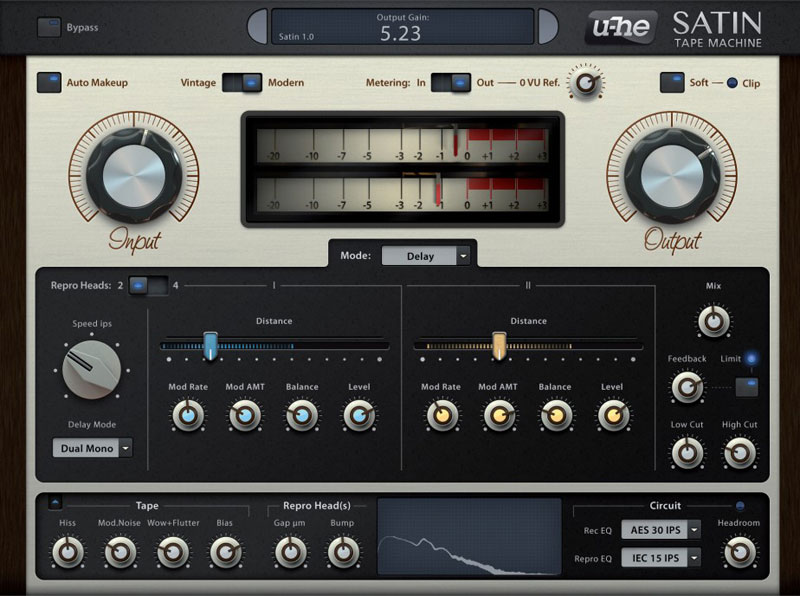Sound Design and Arrangements Series Pt. 2: Balance
This post is a part of a series: Part 1 | Part 2
Balance in mixing—and in music in general—is one of the main aspects of healthy sounding music, mostly because it is a reflection of space, and perhaps, our life as well. While this post is mostly about my philosophy of work, I’ll still discuss some technical tips that can be applied to your mixing strategy and arrangement work.
Let’s define what balance means in design and see how this translate to music:
Balance is the distribution of the visual weight of objects, colors, texture, and space. If the design was a scale, these elements should be balanced to make a design feel stable. In symmetrical balance, the elements used on one side of the design are similar to those on the other side; in asymmetrical balance, the sides are different but still look balanced.
Source: Getty Edu
While this comes from visual design, you should already able to see how this is applicable to the world of sounds. When I first read this definition, I could understand how I was already applying it to mixing music, as I get very conscious of space and the distribution of the frequencies. One of my favorite tools at the moment is Neutron, which I use on all my groups and sometimes, all channels, so I can monitor all of them visually. I can also apply EQ flipping, where if you boost on one channel, you’ll do the exact opposite cut on another channel that is battling the first one to be heard. Using the Visual Mixer tool, you can then place each sound in space. For people who struggle with panning, this is a precious tool that will also help you see if you have distributed your sounds properly.
One of the most misunderstood aspects of mixing I see is the volume difference between elements. Thinking that everything should be loud is a not only a misconception, but it creates imbalance. The volume difference represents the space use and you need some that are further away otherwise the louder one won’t be important, they’ll be lost.
Same goes for textures. Not all your sounds can be textured simultaenously, otherwise you won’t be able to notice their differences. However they can all be textured at different times. I like to split the arrangements timeline in 3 parts and will let sounds have their moment in each; it keeps the story evolving.
Regarding the stereo spectrum, we often relate this to left and right panning, but one important part a lot of new people to mixing don’t see is the importance of the mono section. If you want your song to have a backbone, you need that part to be dead solid. One trick I like is to have a compressor in a return channel and add a mono utility there. I’ll send a lot of my groups to that mono’er channel that will beef up the mono signal of the track.
As for the frequency spreading, I find that your whole spectrum can be divided in 5 sections: low, mid-low, mids, highs-mid, highs. You can technically have them all loud, but that’s not really good balance, and your mix will probably sound harsh if you don’t control resonances and transients properly. I think having 2 out of those 5 frequency ranges slightly lower than the others will give some room for your mix to breathe. When people book me for mastering, they can select a coloured or transparent master, and if they ask for coloured, this is basically what I’ll do. Re-adjusting 2 of the bands will give a new tone to the track and most of the time, mixes I get are already unbalanced as there’s often a band that is way too loud (most of the time, the lows). If the lows are too loud, then I will lower them.
Now, when it comes to arrangements, this is where it gets fun.
I find that there’s a lot to say about the significance of arrangements. Arrangements come in many forms: short stories, edited experiences, live jams, etc.—but I find those three types are a good starting point. A pop song can be a short story, and a piece of minimalist techno music can also be one, but with a different purpose. The reason we apply a certain methodology to arrangements is to maximize the potential of the sounds, as well as the patterns. In the previous post in this series, we talked about contrast and how it can be used in a specific sound—balance, on the other hand, can be exists on multiple levels.
How Do I Know if an Arrangement is Well-Balanced?
The idea of using balance to leverage creativity is not a rule, but an idea and approach. There are countless pieces out there that have no balance and it work perfectly. I find that balance in arrangements is a method of regulation, but it’s not something I’d focus on alone as the main approach.
See balance as tomato sauce. It can be a really great base for a lot of dishes and yes, it can be used as-is, but it does a better job when it’s combined with other ingredients. This is why it works well on a pizza and pastas, etc.
So It depends what you listen to and of course, some great songs are totally unbalanced and that’s what makes them special. I like to say that rules are made to be broken, but you need to know the rules first. A balanced song has a better chance of creating a quality that we all strive for in music: timelessness. In visual arts, minimalism aged well. The logo of Mercedes has basically remained the same, compared to Google’s original disaster brand. Same for music, in general. What I see is that music which is balanced, has a number of sounds playing at a time and has an organization and internal self rules that are set to keep a clarity and easy understanding.
I find that balanced arrangements usually feel easier to understand and are not too destabilizing. But if you go in the opposite direction voluntary, it can be a good way too create contrast.
A song with a balanced mix has a full presence and usually doesn’t have one element stand out. So for percussion, I like to have a balance of numerous sounds but you can then have one that pop out, in contrast (refer to part 1).
As for having balanced arrangements, I’d recommend the following:
Set the rules of your song in the 1st minute (or first part). This can be the tempo, time signature, density, motif preview, etc. The rest of the song is a balance of contrast operating in the rules you’ve set. By balance, we can agree that it’s about not placing all your tricks into the same thing.
Distribute your ideas evenly across your song. I’m talking about the motif for instance, that could reveal one variant more per section. Balance predictability as well unpredictability by having your sounds come in and out at times the listen gets used to.
Use repetition to create patterns that support one another. The famous call and response technique is a good example.
The best way to leave annotations in your arrangements is by adding a empty MIDI channel and creating blocks that you can stretch over sections of your song and leave notes accordingly. This can be very helpful if you have a hard time seeing how sounds are distributed once a channel is flattened.
I like to have colours for each genre of sounds. This usually tells me if there’s too many percussion blocks compared to another group, for example.
Background sounds are often a good way of helping everything work together. Songs that feel full have a background, a noise floor. It can be a reverb, noise, or it can be field recordings. People often ask me where you can find sounds like that. Archive.org, Freesounds.org, Loopcloud, and Soundly are all super useful for finding these as well as odd and out of ordinary ideas.
This post is a part of a series: Part 1 | Part 2












Leave a Reply
Want to join the discussion?Feel free to contribute!